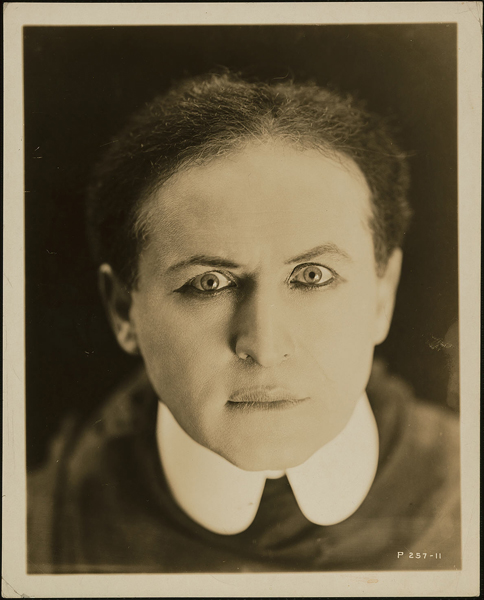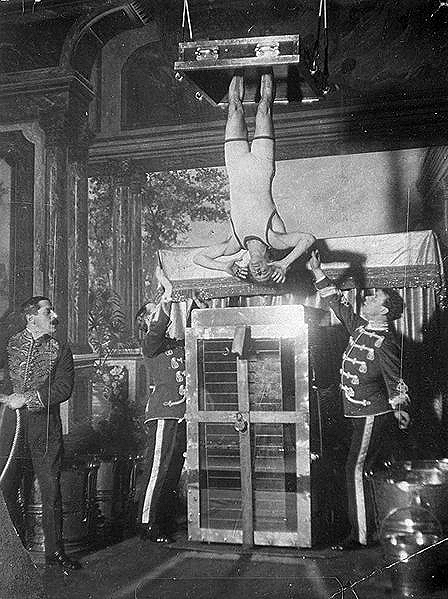October 31, 1926: Death Proves Inescapable for Even Houdini
Magician Harry Houdini, who could seemingly escape anything, couldn’t escape a punch to the gut and appendicitis
/https://tf-cmsv2-smithsonianmag-media.s3.amazonaws.com/filer/20111031114004HoudiniCrop2.jpg)
Master magician Harry Houdini made a living wowing audiences and escaping from death-defying situations. But this day in 1926 the Great Houdini was unable to cheat death one more time and succumbed to peritonitis resulting from a ruptured appendix at age 52.
“Harry Houdini is famous for his incredible feats of magic,” says historian David C. Ward of the National Portrait Gallery, “all of which required meticulous planning and preparation.”
Born Erik Weisz to Jewish parents in Budapest, Hungary in 1874, Houdini’s family immigrated to Appleton, Wisconsin, when he was four years old. He adopted the “Harry Houdini” moniker in 1891 when he became a professional magician, in honor of French magician Jean Eugene Robert Houdin and American magician Harry Kellar.
![]()
Houdini started out with card tricks at small venues and progressed to escape acts on the vaudeville circuit, eventually earning the title of “The Handcuff King.” “For him,” illusionist David Blaine noted to The New York Times in October of last year, “sometimes the difficult thing was keeping the handcuffs on.”
As Houdini’s stature as a performer increased, he had to up the ante with new stunts to please spectators. “I knew, as everyone knows,” wrote Houdini, “that the easiest way to attract a crowd is to let it be known that at a given time and a given place someone is going to attempt something that in the event of failure will mean sudden death.”
Houdini escaped from a wide variety of objects, including items suggested by his audience: straitjackets, boilers, wet sheets, milk jugs and supposedly even the belly of a preserved “1,600-pound sea monster” that had washed ashore in Boston.
His 1912 underwater box escape in New York’s East River was proclaimed by Scientific American magazine as “one of the most remarkable tricks ever performed.” And Houdini continued his string of legendary stunts, debuting his legendary Chinese Water Torture Cell later that year. In it he was suspended upside-down in a locked glass and steel cabinet overflowing with water.
“Amidst the sensation,” says Ward, “what is not as well known, however, is that Houdini also spent much of his career debunking and exposing charlatans and con-men who used aspects of magic, especially séances with the dead, to dupe a credulous public. Spiritualism had an upsurge after World War I as populations that had suffered horrendous loses sought ways of coping. But Houdini dismissed claims of the supernatural as so much quackery that cruelly played on the hopes of those who had lost loved ones.”
But how did he finally die? Houdini apparently had been suffering from appendicitis for weeks before his death on Halloween of 1926, but hadn’t sought out treatment. Things came to a head after an October 20 performance at the Princess Theater in Montreal. According to eyewitnesses, Houdini was laying on a couch having his portrait sketched by a student when Jocelyn Gordon Whitehead, a McGill University student, entered the room. Whitehead asked to test Houdini’s claim to be able to absorb any blow to the body above the waist without injury.
Upon Houdini’s supposed approval, Whitehead delivered multiple blows to Houdini’s stomach, reportedly hitting him three times before the magician was able to tighten his stomach muscles to protect himself sufficiently.
It’s likely Houdini’s appendix would have burst on its own without striking. Houdini still continued to travel while in severe pain, and arrived in Detroit on October 24, 1926 for what would be his final performance. He took the stage at Garrick Theater even with a fever of 104 and a diagnosis of acute appendicitis. When Houdini had surgery to remove his appendix later that afternoon, doctors discovered it had ruptured and that he was suffering from peritonitis. Houdini died of peritonitis seven days later October 31 at age 52.
“Houdini’s death was ironic and tragic in equal measure, ” says Ward. “His escape artistry required him to be in incredible physical condition, able to endure small spaces in a twisted pose and capable of wriggling free from straitjackets, chains and other ingenious restraints. His body was battered and bruised both by the acts themselves and all the training.”
More than 80 years later, Houdini still captures imaginations. “I am so amazed that even though Houdini died in 1926…the world is still baffled and mystified by him,” Dorothy Dietrich wrote on the Harry Houdini Museum website. Dietrich, who is a leading female magician and a board member for the museum says, “He instills a feeling of wonder to everyone just by mentioning Houdini’s name. Poof!”
/https://tf-cmsv2-smithsonianmag-media.s3.amazonaws.com/accounts/headshot/Jeff-Campagna-240.jpg)


/https://tf-cmsv2-smithsonianmag-media.s3.amazonaws.com/accounts/headshot/Jeff-Campagna-240.jpg)